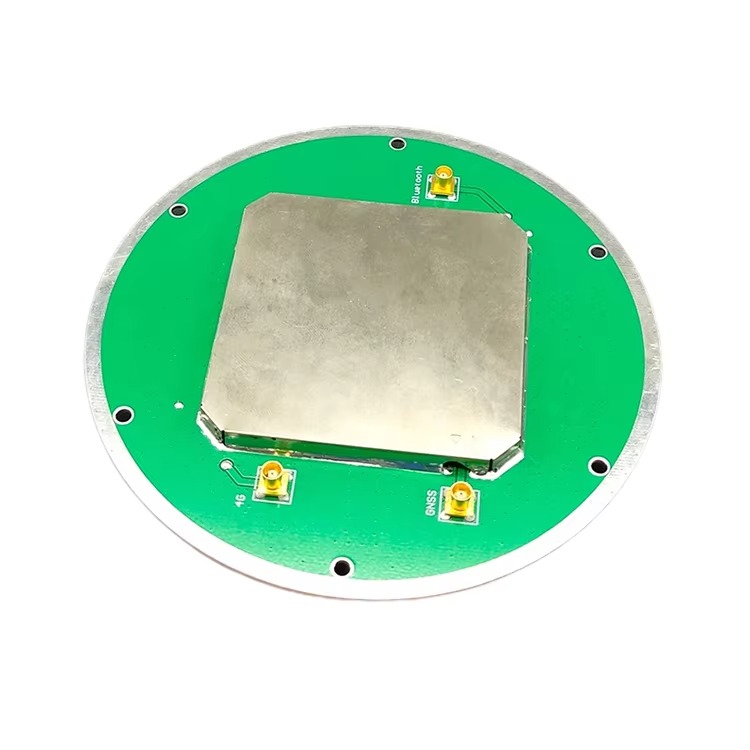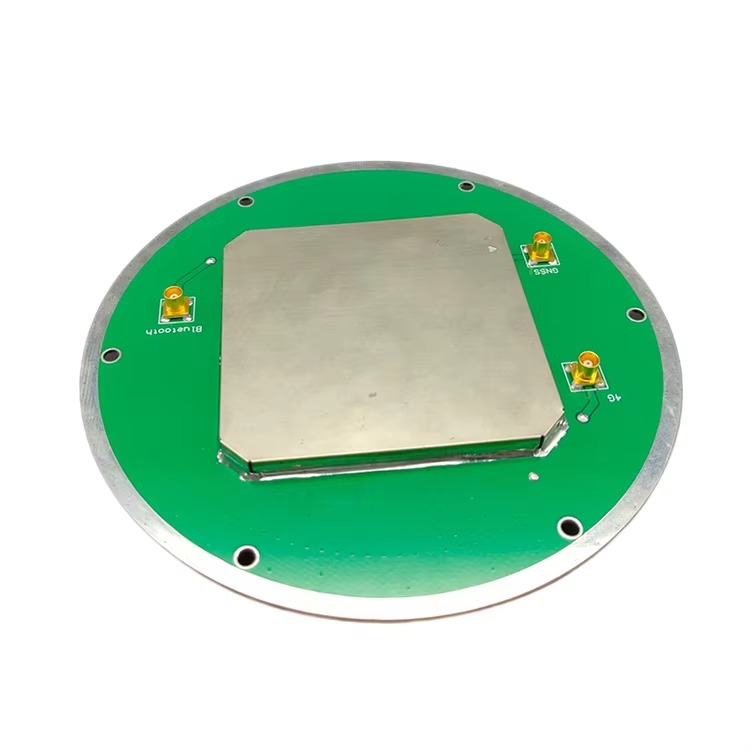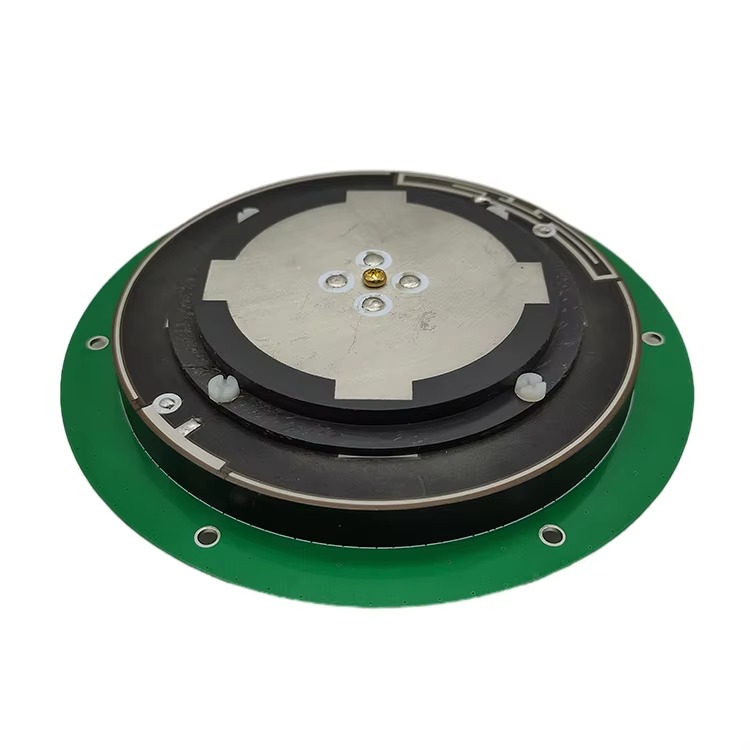Rugged CORS antennas are the foundation upon which entire industries and scientific disciplines are built. Their application is wherever absolute, reliable, and continuous positional truth is required. Furthermore, the field is not static; it is evolving to meet the demands of new technologies and an increasingly crowded RF spectrum.
Core Applications
National Geodetic and Spatial Reference Networks: This is the classic and most critical application. Government agencies (e.g., NOAA's National Geodetic Survey in the USA, Ordnance Survey in the UK) operate networks of hundreds of CORS stations equipped with these antennas. They define the official national datum, serving as the primary control points for all surveying, mapping, and construction projects nationwide. The data is essential for monitoring crustal deformation and tectonic plate movement.
Scientific Research: Geophysics research heavily relies on CORS data from rugged antennas.
Tectonic Studies: By precisely measuring the minute movements (a few mm/year) of CORS stations, scientists can study plate tectonics, earthquake mechanics, and volcanic deformation.
Meteorology: GNSS signals are delayed by the atmosphere. By analyzing signals from a network of CORS stations, scientists can derive accurate measurements of atmospheric water vapor, aiding weather forecasting and climate change research.
Timing and Geodesy: The ultra-stable reference provided by these antennas is used for high-precision time transfer and for maintaining the International Terrestrial Reference Frame (ITRF).
Precision Agriculture: Large-scale agricultural operations use private or subscription-based CORS networks to provide RTK corrections to fleets of automated tractors, harvesters, and sprayers. The reliability of the base station antenna is paramount to ensuring uninterrupted operation during critical planting and harvesting windows.
Construction and Machine Control: Major construction projects for roads, tunnels, and buildings establish temporary CORS sites on-site. The rugged antenna provides the local control frame, guiding bulldozers, graders, and pile drivers with centimeter accuracy, drastically improving efficiency and reducing rework.
Critical Infrastructure Monitoring: Networks of GNSS sensors with rugged antennas are used to monitor the structural health of large-scale infrastructure like dams, bridges, and offshore wind farms. They can detect subsidence, tilting, or deformation with millimeter-level precision, providing early warning of potential failures.
Future Trends
The future of rugged CORS antenna technology is being shaped by the need for greater integration, resilience, and intelligence.
Miniaturization of Multipath Mitigation: The large choke ring is effective but cumbersome. Future trends point towards the adoption of metamaterials and Frequency Selective Surfaces (FSS). These are artificial materials with engineered electromagnetic properties that can mimic the multipath-rejecting behavior of choke rings in a much thinner, lighter, and low-profile form factor. This will make high-precision antennas viable for a wider range of sites where a large monument is impractical.
Enhanced Resilience to Interference and Jamming: The RF spectrum is becoming noisier. Future CORS antennas will increasingly incorporate Anti-Jamming (AJ) and Anti-Spoofing (AS) capabilities directly into their design. This could involve integrating multi-element antennas ( Controlled Reception Pattern Antennas - CRPAs) that can adaptively form nulls in the direction of jammers, protecting the integrity of the CORS station from intentional or unintentional interference.
Integrated Monitoring and "Smart Antennas": The antenna will become a more intelligent component of the system. Future designs may include integrated sensors to monitor their own health—reporting internal temperature, humidity (a sign of seal failure), and DC power levels back to a network operations center. This enables predictive maintenance and remote diagnostics.
Focus on Full-Spectrum and Next-Gen Signals: As satellites modernize, new signals are being broadcast (e.g., GPS L5, Galileo E6). Antenna design will continue to evolve to provide optimal performance across an even wider bandwidth, ensuring these new, more robust signals are received with the same fidelity as legacy signals. Support for the Licensed Assisted Navigation (LAN) signal in the E6 band will be important for high-integrity applications.
Tighter Integration with Communications: The rise of Precise Point Positioning (PPP) and the need for real-time corrections will drive the integration of communications hardware (e.g., cellular modems, satellite links) directly into the CORS station monument. The antenna design may evolve to include radomes that are transparent to both GNSS frequencies and cellular/radio links, creating a more integrated and aesthetically neutral site design.
In summary, the application base for rugged CORS antennas is solid and expanding as precision positioning becomes more deeply embedded in the economy. The future will see these antennas become smarter, more resilient, and more compact, ensuring they continue to provide the bedrock of positional truth for the next generation of autonomous and precision-critical systems.
6. Conclusion: The Indispensable Bedrock of Precision Positioning
The rugged CORS base station antenna stands as a testament to the principle that foundation matters. In a world increasingly driven by data and automation, the integrity of the underlying data source is paramount. This antenna is not a commodity; it is a precision scientific instrument, engineered to a standard of performance and reliability that transcends the capabilities of ordinary GNSS components. It is the unwavering fiducial point upon which the entire edifice of high-precision GNSS is constructed.
The conclusion to be drawn is that the value of a rugged CORS antenna is intrinsically linked to the value of trust. Surveyors trust that the corrections they receive are derived from a stable and accurate reference. Scientists trust that the millimeter-level movements they detect in the crust are real tectonic shifts and not artifacts of a drifting antenna phase center. Engineers and farmers trust that their autonomous machines will operate within precise boundaries, ensuring safety and efficiency. This trust is earned through the antenna's obsessive design focus on long-term phase center stability, environmental hardening, and superior error mitigation.
This role makes it an indispensable, non-negotiable component for any permanent or semi-permanent reference station. While the challenges of cost, size, and installation complexity are real, they are not drawbacks but rather investments. They are the necessary price of admission for achieving and maintaining the highest level of geospatial data integrity over decadal timescales. The cost of antenna failure or data corruption at a CORS site—in terms of corrupted scientific data, misguided machinery, or the expense of sending a crew to a remote location for repairs—dwarfs the initial investment in a truly ruggedized component.
Looking forward, the role of the CORS antenna will only grow in importance. As autonomous vehicles transition from controlled testing to public roads, the need for a highly reliable, certified, and resilient correction infrastructure will become a matter of public safety. National security and economic resilience will depend on robust Positioning, Navigation, and Timing (PNT) that is resistant to jamming and spoofing. The rugged CORS antenna, evolving with integrated anti-jam capabilities and smarter monitoring, will be at the core of this trusted PNT infrastructure.
In final analysis, the rugged CORS base station antenna is more than just the first element in a signal chain. It is the guardian of measurement truth. It is a silent, steadfast sentinel that faithfully observes the satellite constellations, day and night, in all weather, providing the constant and reliable reference that allows everything else in the precision GNSS ecosystem to move with confidence. Its continued development and deployment are essential for scientific advancement, economic productivity, and the next great leap forward in automation.




































































 Language
Language
 En
En Cn
Cn Korean
Korean

 Home >
Home > 







 18665803017 (Macro)
18665803017 (Macro)













